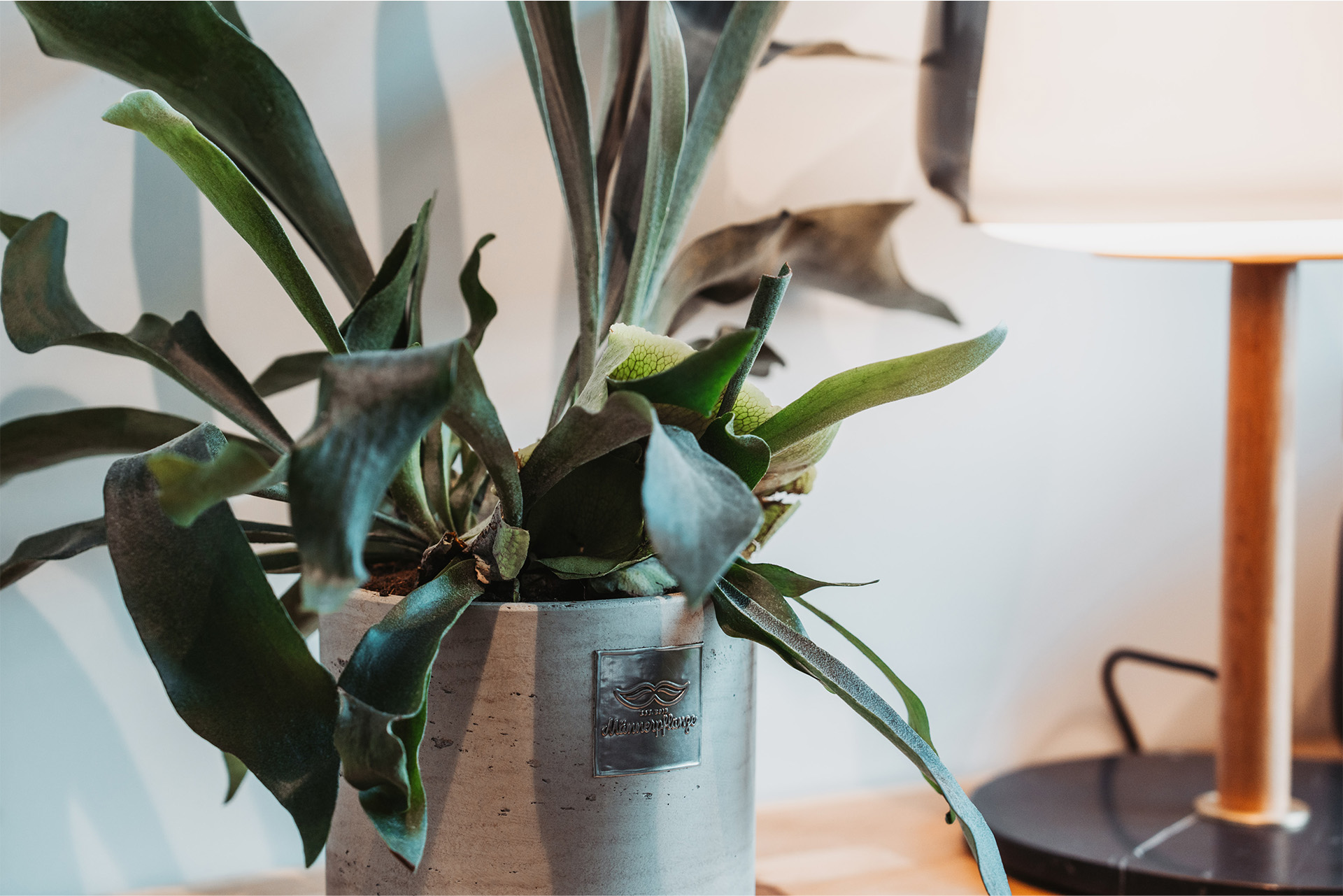This is Jimmy.
Wild and free.

Leafy plant
0.5dl every 2 weeks
Plenty of light
Height approx. 30cm
M, pot diameter: 18cm
CHF 69
He knows exactly
What he likes.
Of course we'll tell you.
Location
The staghorn fern (Platycerium) requires a bright location with indirect sunlight and high humidity, e.g., in the bathroom.
01
Plenty of light
Nurture
The root ball should always be kept slightly moist, but not wet. Avoid waterlogging and do not spray the leaves, as this will remove the protective wax coating. Fertilize occasionally, but do not overdo it. This plant does not need much fertilizer.
02
0.5dl every 2 weeks
Temperature
Temperatures around 20 °C and warmer are optimal; the thermometer should not fall below 16 °C, even in winter.
03
The staghorn fern almost seems like a forest avatar: thanks to spore reproduction, it continues to grow vigorously, and its leaves shoot out in all directions like antlers.
Symbolism, colors & shapes
We call the staghorn fern Jimmy because, like the legendary guitarist Jimmy Hendrix, it has a cool aura, chillaxed but fully in tune with nature. The staghorn fern almost seems like a forest avatar: thanks to spore reproduction, it continues to grow vigorously, and its leaves shoot out in all directions like antlers. Symbolically, it stands above all for growth, vitality, and new life – a green source of fresh air par excellence. In traditional Chinese medicine and feng shui, it embodies awakening and transformation and is associated with the element of wood. The leaves are shaped like antlers and branch out beautifully with age. The staghorn fern has no flowers, is grey green in color, and has a waxy coating on its leaves that protects it from drying out. In short, it is an evergreen power icon of closeness to nature that gives every room a touch of jungle feeling – completely pollen-free, but with lots of character.
Origin
The staghorn fern is like a floating forest knight: it grows as an epiphyte on trees in the tropical rainforests of Southeast Asia, Australia, and Africa, using rainwater and air as nutrition and anchoring itself securely to branch forks with shield-shaped niche leaves. There are many different types of staghorn ferns, including Platycerium bifurcatum, which is often cultivated in gardens and homes. This species is not parasitic but instead collects leaves and converts them into nutrients. Thanks to its adaptability, the staghorn fern has established itself as a popular houseplant worldwide. In summer, it enjoys outdoor adventures, while in winter it remains cozy like a green jungle icon in the living room.
he wants
you too.








